Bromeliad indoor plants
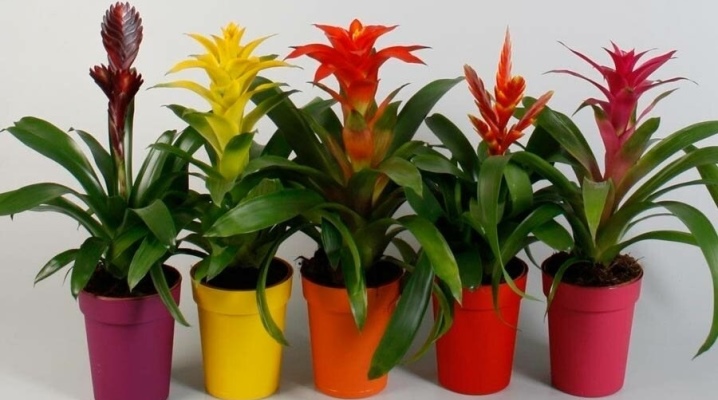
Bromeliad plants are diverse, so it is sometimes difficult to imagine that they belong to the same family. It is enough just to remember the pineapple with its edible "cone", the beautiful Ehmeya, which gives exotic flowers, or tillandsia growing on snags. In the article, we will introduce you to the features of bromeliads, their most popular varieties, and give advice on care.
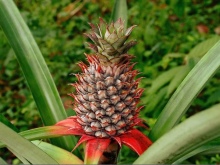
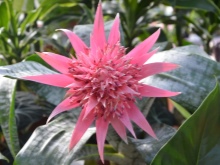

Peculiarities
In their natural habitat, these flowers give the impression of unpretentious, nevertheless, when growing indoor varieties, most gardeners face difficulties. AND first of all, they are due to the need to create a microclimate as close as possible to that to which plants are accustomed in the wild.
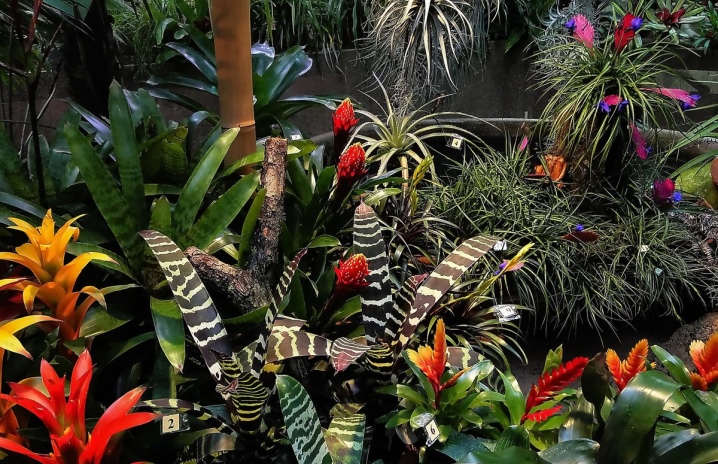
The homeland of these green pets is the tropical and subtropical regions of South Africa - these places are characterized by a warm climate with high humidity.
That's why most bromeliads are grown in greenhouses and conservatories, but nevertheless, some varieties were able to take root in the homes of Europeans. True, they retained the requirements for the environment.
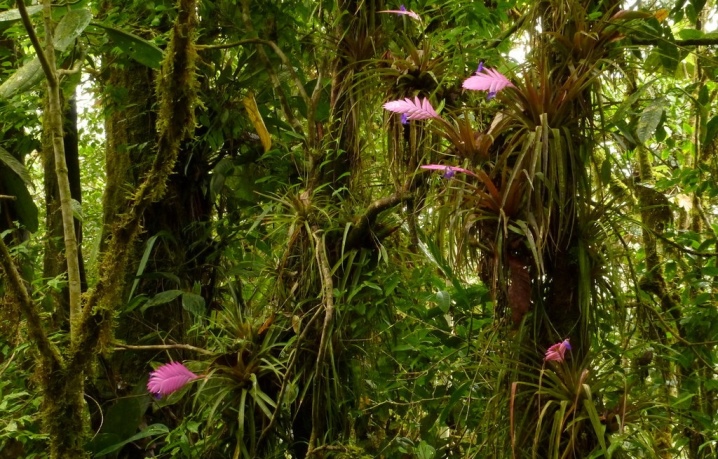
One of the most common representatives of this plant is pineapple. It grows on the ground, and receives all the food it needs from it. Indoors, it is grown on a fragment of an epiphytic tree - this allows you to create rather intricate compositions. A depression is formed in a small snag, it is partially filled with a suitable substrate, a young plant is placed there. From above, the roots are covered with sphagnum - it needs to be moistened regularly. In this form, pineapple can decorate any interior and even become an excellent gift for a dear person.
Do not be surprised if, when buying a flower at specialized points of sale, you notice a label with the name "bromeliad mix" - usually all members of the family in stores are united under a single name.
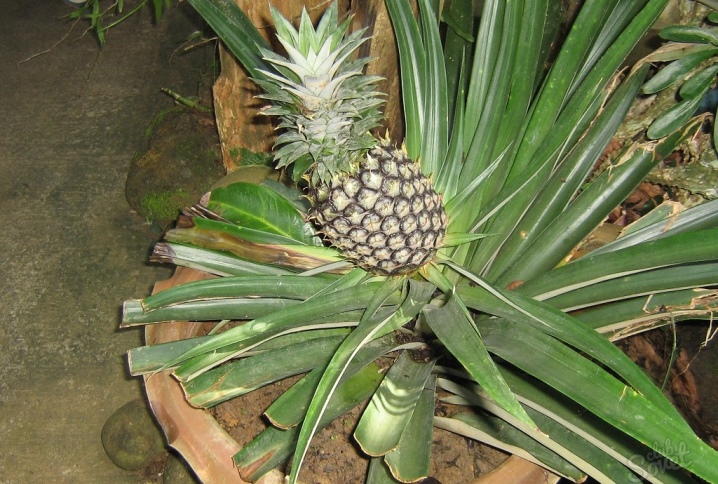
Overview of genera and species
Bromeliad conditionally can be divided into 3 groups depending on their habitat.
Reservoir (epiphytic)
These include ehmeya, gusmania, cryptantus, as well as vriezia and blue tillandsia. The narrowed elongated fleshy leaves of these plants form a rosette, from the middle of which a spectacular inflorescence rises on a narrow peduncle. The leaves adhere so tightly to each other that they form a kind of funnel. Moisture accumulates in this reservoir, insects enter it and die, forming organic residues - it is they that become the source of nutrition for the flower.
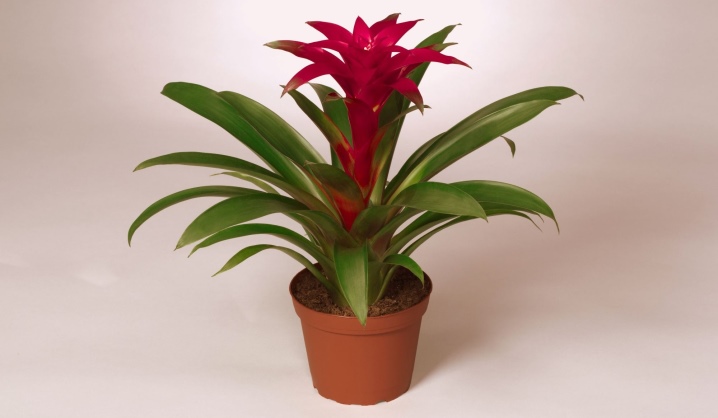
Reservoir plants come from the jungle, where they grow in trees or dense forest floor. Their roots serve as an anchor hooked onto driftwood. Domesticated varieties have a very weak root system, so it is best to plant them so that the flowers are as stable as possible in the ground.
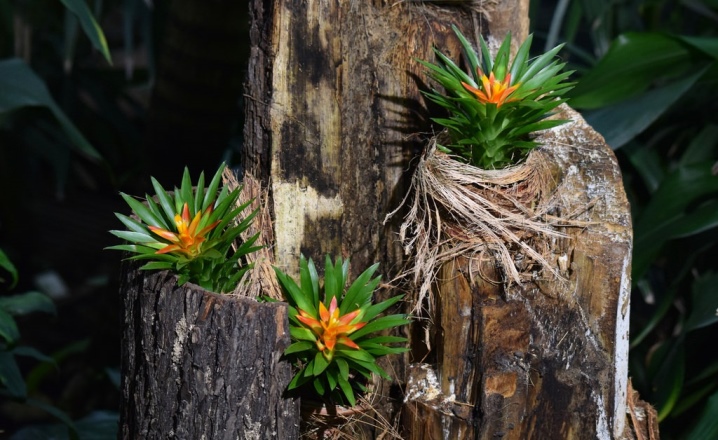
Atmospheric
These bromeliads naturally settle on the tips of young shoots and thorny cacti. In the overwhelming majority of cases, their roots are undeveloped at all, but the plants themselves can have rather diverse forms. The most common members of the genus are gray tillandsia. In nature, they receive food in full from dust particles, and water from fog or dew drops, so indoor varieties cannot be watered.
Such flowers do not need a special substrate - it will be enough just to fix them on a decorative stand.
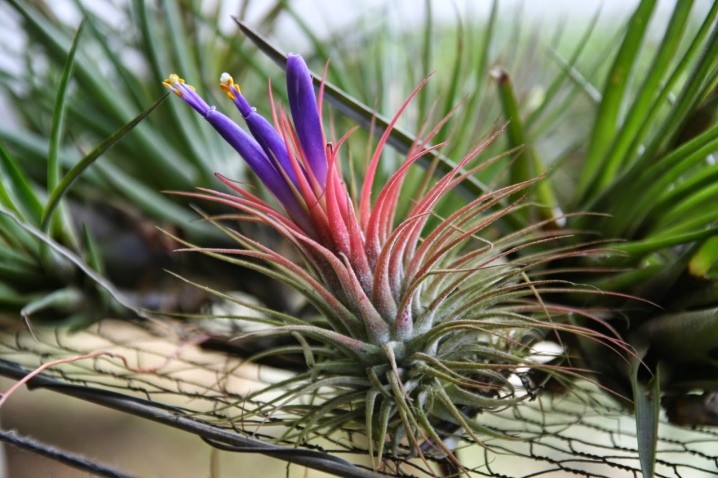
Terrestrial
These representatives of bromeliads have a developed root system and are almost indistinguishable from many other indoor flowers. Water accumulates in the tissues of these crops, which gives the leaves a leathery, shiny and glossy appearance.

Among all this variety of bromeliads, several varieties are most popular.
Large-crested pineapple
This is probably the most popular houseplant in the family. It is known to everyone for its delicious edible fruit that looks like a big cone. But only experienced flower growers know that the indoor variety is a small bush with built-up elongated leaves. The plant requires light and warmth, it responds gratefully to abundant watering and frequent spraying.
By the way, this exotic can be grown from the apical parts of the fruits, which can always be bought in all grocery stores.
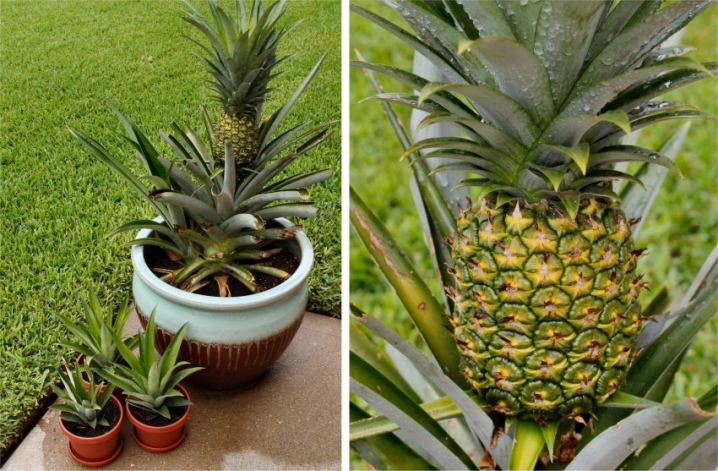
Bilbergia
Quite an unpretentious plant, which is distinguished by narrow leaves hanging down. They have a deep green color and slightly serrated edges. This pet needs moderate air humidification and bright, but diffused light. The flower is completely unpretentious for watering and can successfully grow and develop without loosening, fertilization and other procedures for caring for green pets. This unusual plant can withstand temperatures up to + 2 ... 3 ° С.
Bilbergia blooms only once in a lifetime.
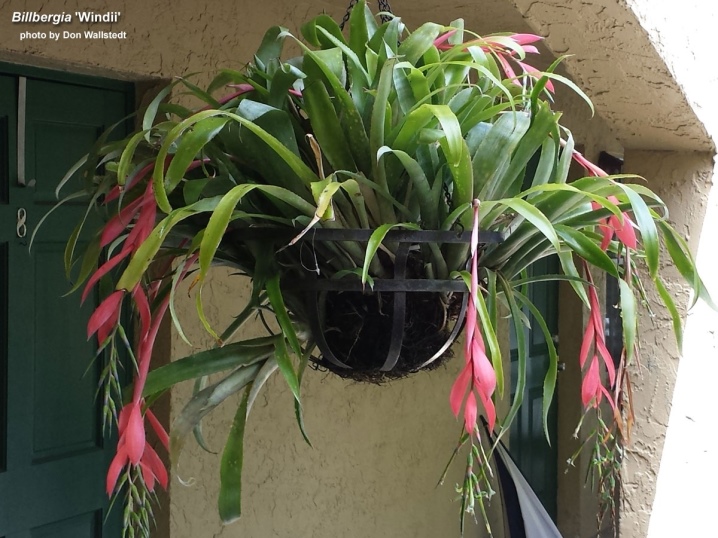
Bromelia
This plant forms a rather strong rosette of elongated leaves. To grow, he needs good watering, a lit place and high humidity in the room. It blooms in cold weather, as the inflorescences dry up, they must be removed.
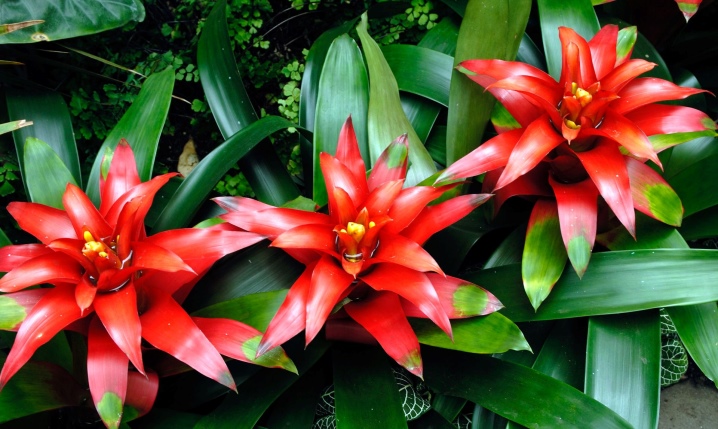
Vriezia
This plant should be started by those flower growers who already have basic skills in growing epiphytes. The fact is that they should be planted on a grape shoot, log, snag or any other lignified fragment of a plant.
This crop gratefully responds to high humidity; it requires soft water for irrigation.
Important: you can water the flower exclusively into an outlet, while you must ensure that moisture does not stagnate in it.
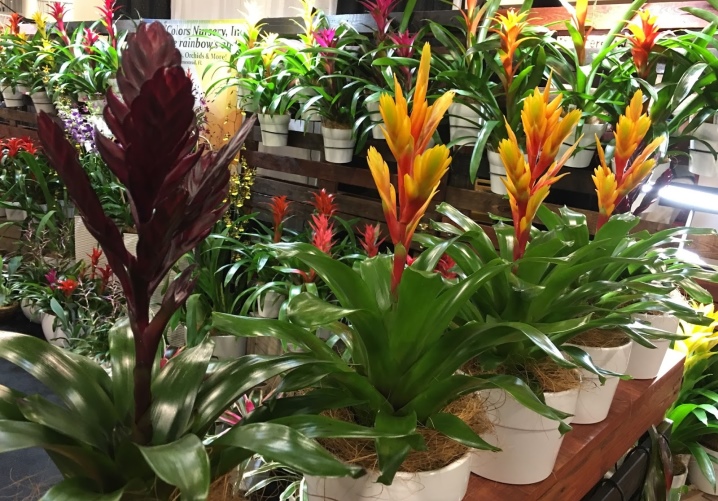
Guzmania
This bromeliad forms a large rosette of smooth leathery leaves. For development, it requires abundant watering, a sunny place and a high level of humidity. Guzmania blooms in winter.
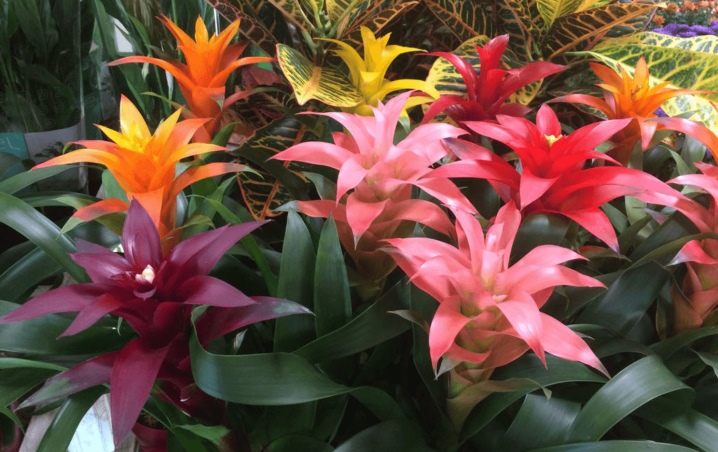
Tillandsia
Atmospheric variety. The most common representative is the tillandsia head of the jellyfish, which produces small blue flowers, the bracts are red.
Violet-flowered tillandsia looks very impressive. It is a compact plant with a height of only 5 cm, which forms a small rosette of silvery leaves. When sessile flowers form, the inner leaves take on a red tint.
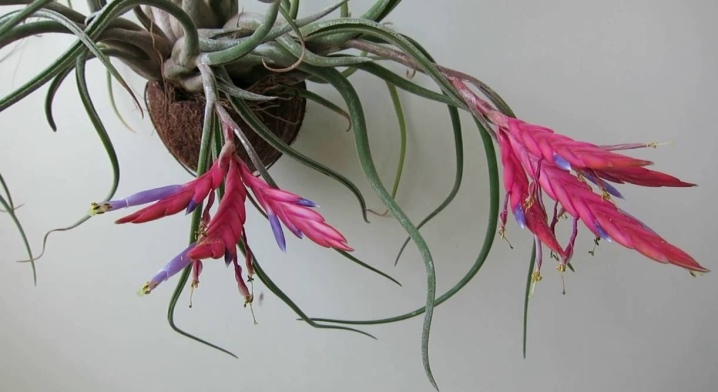
Ehmeya
This is a typical representative of bromeliads with leathery curved leaves and a rosette typical of plants of the family. Peduncles emerge from the funnel, bearing inflorescences of saturated shades. The most popular is striped ehmeya. It is a plant with grayish-green leaves and a pale pink inflorescence that lasts from mid-summer to early winter.
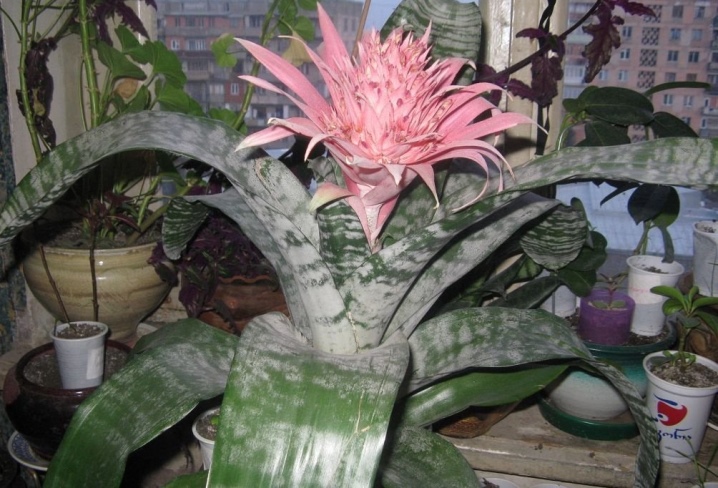
Recommendations for owners
Thanks to the efforts of breeders, indoor varieties of bromeliads grow and develop quite successfully at home. These are undemanding plants that still need certain conditions for keeping.
Illumination
Best of all, representatives of this culture feel in rooms with bright, but diffused lighting. The optimal place for them is the western as well as the eastern window sills; on the south side, burns often appear on the surface of the leaf plates. When grown on northern windows, plants in cold weather need additional illumination, and it is desirable to direct the luminous flux to the ceiling.

Temperature
In spring and summer, the plant is quite comfortable at a temperature of + 22 ... 25 ° С, and in autumn and winter, it is better to reduce heating to + 16 ... 19 ° С. The minimum permissible temperature is + 12 ° C; in a colder room, the plant quickly dies.

Watering
Bromeliads are water-loving plants, therefore intensive irrigation is important for them. In summer, watering should be daily, but in winter it is reduced to 1 time per week. Water can be taken exceptionally soft, filtered or settled. The outlet needs to be watered weekly, and every 3-4 weeks it needs to be cleaned with a cotton swab.
Please note that at a temperature of less than + 18 ° C, the outlet cannot be moistened, as rotting may begin in it.
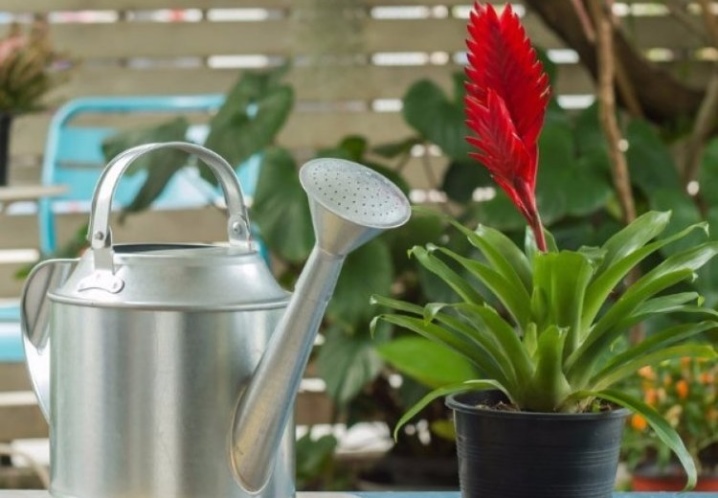
Top dressing
Bromeliads are also fed through an outlet. In winter, they require additional feeding once a quarter, and in summer, nutrients need to be applied more often - every 2-3 weeks. The most effective are complex preparations intended for flowering plants.
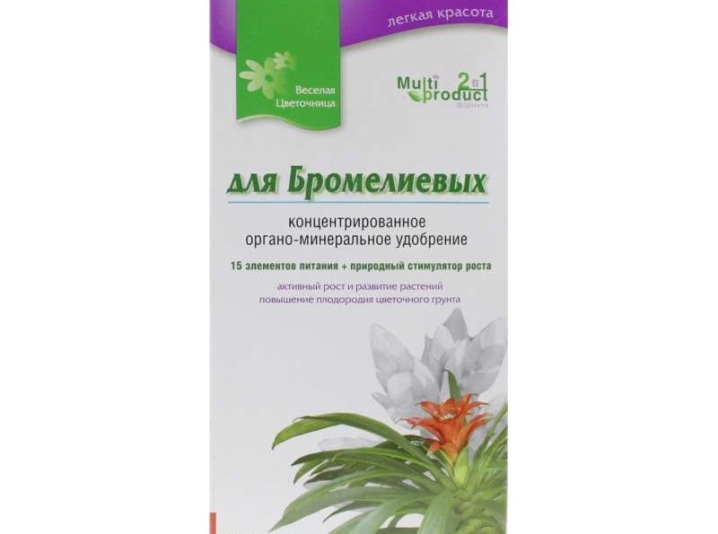
Humidity
Like any native of the jungle, bromeliads love high humidity. A comfortable level for them is considered to be 70% and above. However, it is difficult to provide such conditions in a living room, so in apartments you can simply install a room fountain on the windowsill next to the pet, or you can regularly spray the leaves. For more effective moisture retention, lay out the pallet with moss, expanded clay or pebbles.

Priming
The soil for bromeliads requires moisture and air permeability. Do not plant a flower in garden soil. The best option would be a ready-made store-bought substrate for decorative orchids.
If desired, the soil can be made by yourself. To do this, mix leaf and turf soil, as well as humus, crushed coal and bark of coniferous trees in equal parts, and in order to make the substrate even looser, river sand and peat are poured into it.
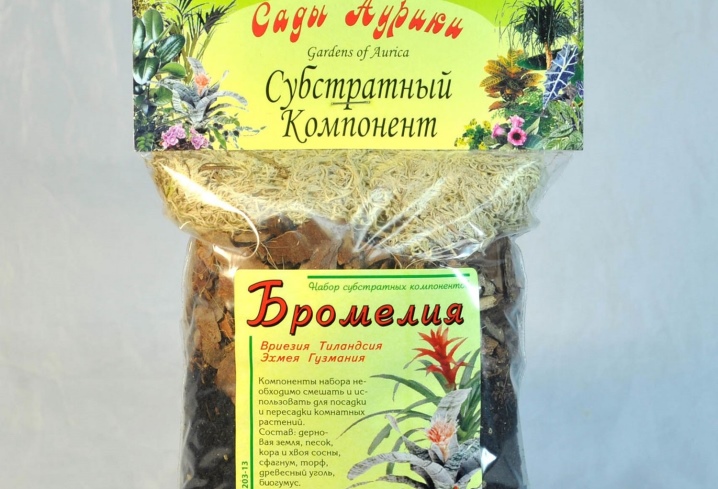
Bromeliads are a variety of amazingly beautiful indoor plants.that will look spectacular in any interior. With proper care, a green pet pleases with its exotic look for many years, begins to bloom early and leaves behind a good strong offspring.
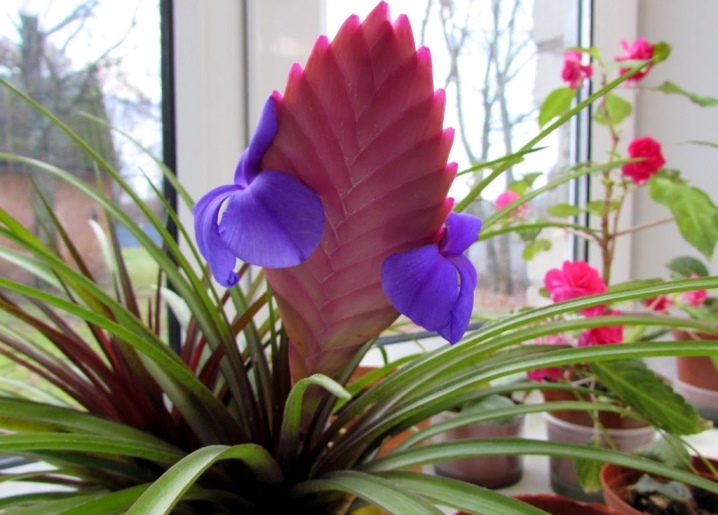
You can find out even more useful and interesting information about bromeliad houseplants in the next video.































The comment was sent successfully.